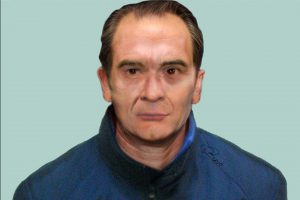The sunset
A poem by Nadia Nencini (1984 – 1993). Nine-year-old victim of Cosa Nostra
The afternoon is ending
The sunset is coming
A stupendous moment
The sun is leaving (to go to bed)
It is already night. All is finished.
Infuriated about the arrest of Riina and Article 41-bis, Cosa Nostra launched a series of terrorist attacks on the Italian mainland. These were meant as retaliation against the Churh and State, who had finally taken a firm position against Cosa Nostra, and also as a political manoeuvre designed to pressure the government to revoke carcere duro. In addition, the attacks served as a warning to all mafiosi who were considering defecting and becoming pentiti.

The attacks were the brainchild of Matteo Messina Denaro, the son of Francesco Messina Denaro, also known as Don Ciccio, who started his career as a campiere and ended it as the boss of the Castelvetrano cosca and the head of the Mafia Commission of Trapani. Don Ciccio groomed his son for the mafia from a young age. In the second mafia war the Castelvetrani forged an alliance with the Corleonesi, and Messina Denaro became a protegee of la belva (the beast) Totò Riina. He is accused of having killed more than fifty people. “I could fill a cemetery with all the people I have killed,” he often boasted in his youth.
“I could fill a cemetery with all the people I have killed.”
Matteo Messina Denaro aka Diabolik
By 1992, Matteo Messina Denaro, who at the time was just over thirty years old, had succeeded his father as boss of the Castelvetrano clan and head of the Trapani Commission. When he heard that the Police Commissioner of Mazara del Vallo, Rino Germanà, had initiated an investigation into his affairs, he decided to assassinate him.
On the 14th of September 1992, Matteo Messina Denaro, Leoluca Bagarella and Giuseppe Graviano ambushed Germanà as he drove along the coast towards his rented holiday home. The Police Commissioner returned fire and dove into the sea. In a fortunate turn of events, Bagarella’s Kalashnikov jammed and Germanà escaped alive.
When Riina was captured on the 15th of January 1993, Messina Denaro came up with the retaliatory attack strategy. He travelled to Rome to scout the area and sort out the logistics for the attacks. The first ambush occurred on the 14th of May 1993, with a bomb targeting Maurizio Costanzo, a popular Italian presenter who had publicly rejoiced when Riina was arrested. Fortunately, Maurizio Costanzo and his wife Maria De Filippi survived, but the presenter and another twenty-three innocent bystanders were injured by the blast.
A few days later, on the 27th of May, a stolen white Fiat Fiorino van packed with 280 kilograms of Pentrite and T4 mixed with TNT was parked under Torre dei Pulci in Via dei Georgofili in Florence. It detonated at one o’clock in the morning, blasting a crater three metres wide and two metres deep and scattering dangerous fragments of metal debris all over the street.
The explosion was so powerful that the entire inner city lost power and went dark. It killed five people, including an entire family – municipal police inspector Fabrizio Nencini, his wife Angelamaria, live-in custodian at the Accademia dei Georgofili, and their two daughters, nine-year-old daughter Nadia and two-month-old Caterina. A 20-year-old architecture student called Dario Capolicchio also lost his life. In addition, a further thirty-three people were injured and needed to be hospitalised.
The placing of the bomb, the massive quantity of explosives, and the time of day the bomb was set to detonate indicated clearly that the main target had been the Uffizi gallery and the fifteenth-century Torre dei Pulci. It was an attack on the culture and heritage of northern Italy. The Uffizi gallery had recently installed bulletproof glass, so although there was serious structural damage, the great majority of artworks survived intact. The Torre dei Pulci, on the other hand, was destroyed, and with it the Nencini family who lived there.
On the 27th of July, in a clear message to the Pope, two separate bombs hit the Basilica of San Giorgio (St George) and the Basilica of San Giovanni Laterano (St. John Lateran) in Rome. A third bomb was also detonated in Milan, with explosives packed in a car parked near a modern art gallery in via Palestro, killing five people.
The attack on San Giovanni Laterano was symbolic, as the church was the Pope’s cathedral in his function as Bishop of Rome. However, the more serious damage occurred to the church of San Giorgio, which was left with a massive gaping hole. It was so damaged there was a serious possibility of it totally collapsing. However, the people of Rome were determined to save it and dozens of experts and volunteers rallied to collect the scattered fragments of the building, packing them away safely in over one thousand plastic boxes. It took over three years and two million euros to repair the damage.
Extract from The Battle for Sicily’s Soul – available at all major online booksellers
The Battle for Sicily’s Soul – Order from your Favourite Retailer Below
